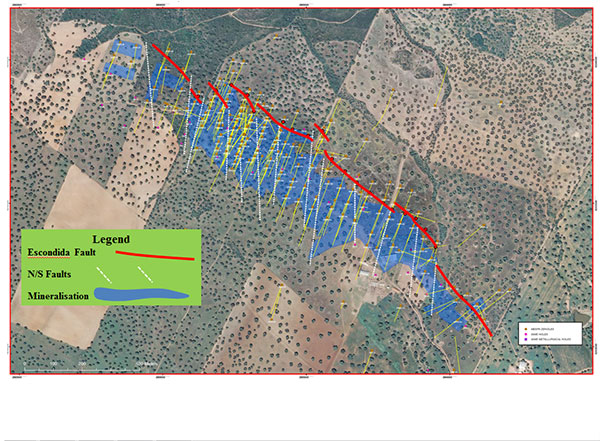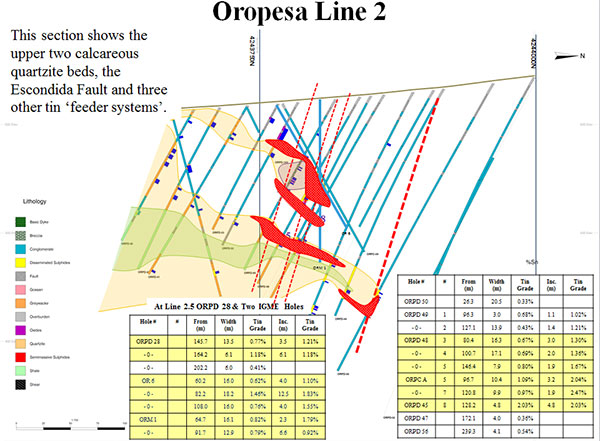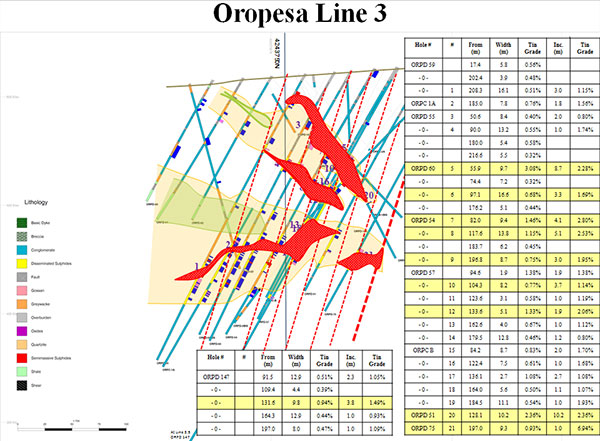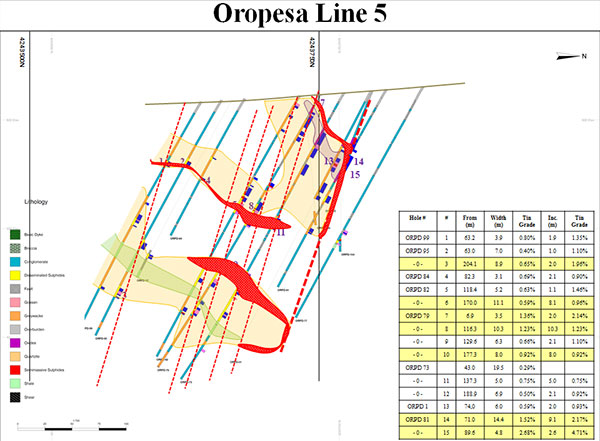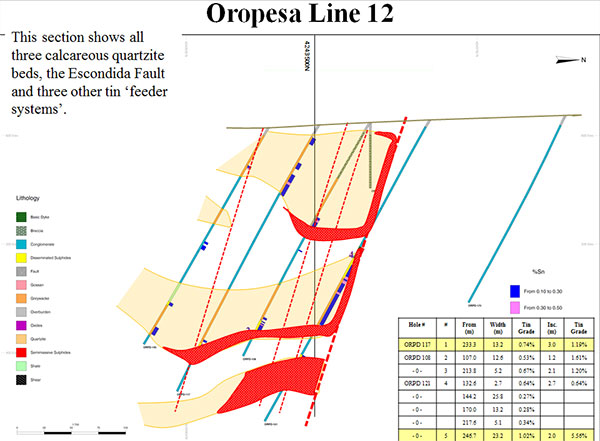The company’s Oropesa zone in the Andalucia region of Spain appears to contain in excess of 10 million tonnes of ore grading 0.25% tin or better. The La Grana zones also appear to have the potential for substantial deposit sizes, about it as well. All the deposits examined appear to have tin in the form of finely grained cassiterite, more about with low levels of stannite. This is fortunate, as cassiterite can be recovered while no commercial operations presently deal with stannite. With modern advances in processing, it would appear that a 50% cassiterite concentrate can be produced from the hard rock ore, using grinding, magnetic separation (to remove iron), flotation (to remove sulfates), and gravity separation (to concentrate the remaining cassiterite). Oropesa would seem to be amenable to being upgraded to a very large deposit, with a surface extent of roughly 2 km by 1 km, and a central higher-grade region that extends some 1,200 m by 150 meters. The current 43-101 pertaining to Eurotin noted that there was insufficient data to calculate a resource. However, at least four historical estimates are available, albeit without sufficient background data to verify the estimates. The smallest of these, made by Locutura et al. in 1990, suggests that Oropesa comprises at least 10 million tonnes of ore grading 0.25% Sn or better. It appears that the historical 0.25% quotation for grade represents a cut-off, rather than a deposit average. This would suggest that the deposit contains at least 25,000 tonnes of tin metal.
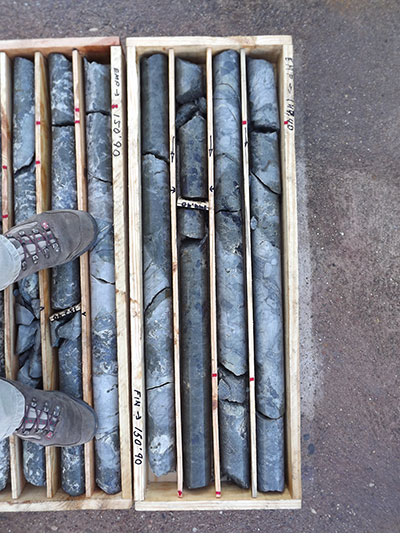
Processing to Concentrate
More is known regarding the metallurgy at both sites. Oropesa appears to have Sn contained primarily in the mineral cassiterite, in wide veins that have probable sizeable depth and strike extent. That the Sn is in the form of cassiterite is fortunate, since cassiterite is the primary Sn-bearing mineral processed in the world today. Unfortunately, the cassiterite appears to be very finely grained. Historical work done in the 1980s indicates grain sizes of 10-20 ?m. This has been problematic, historically. Rock containing very fine crystal grains must be finely ground to successfully separate those crystals from other materials, but finely ground material tends to form slimes when wet gravity separation is attempted. Worse, the material at Oropesa also contains sulfides and fairly large amounts of iron and manganese oxides, as well, which would historically suggest that flotation would be difficult. Indeed, the historical conclusion on the Oropesa deposit was that gravitic separation would be “practically impossible”, and that flotation would be extremely difficult due to the presence of iron, manganese and titanium oxides, where even the iron oxide was resistant to magnetic separation. However, the more recent metallurgical work on Oropesa by SGS in Cornwall, UK, paints a very different picture. In one test, samples from Oropesa were ground to sizes -1.00mm+250?m, -250?m+75?m, and -75?m. At least for the middle fraction, the conclusion was that making a concentrate containing 55% Sn was achievable, that 72% recovery with a 60% reduction in mass was easily achieved, and that (unsurprisingly) recovery scaled with grade. Eurotin’s published 43-101 suggests that the divergence between historical and modern conclusions may be due to either or both of the labs conducting the work in the 1980s being improperly equipped, and the development of new techniques during the intervening two decades.
